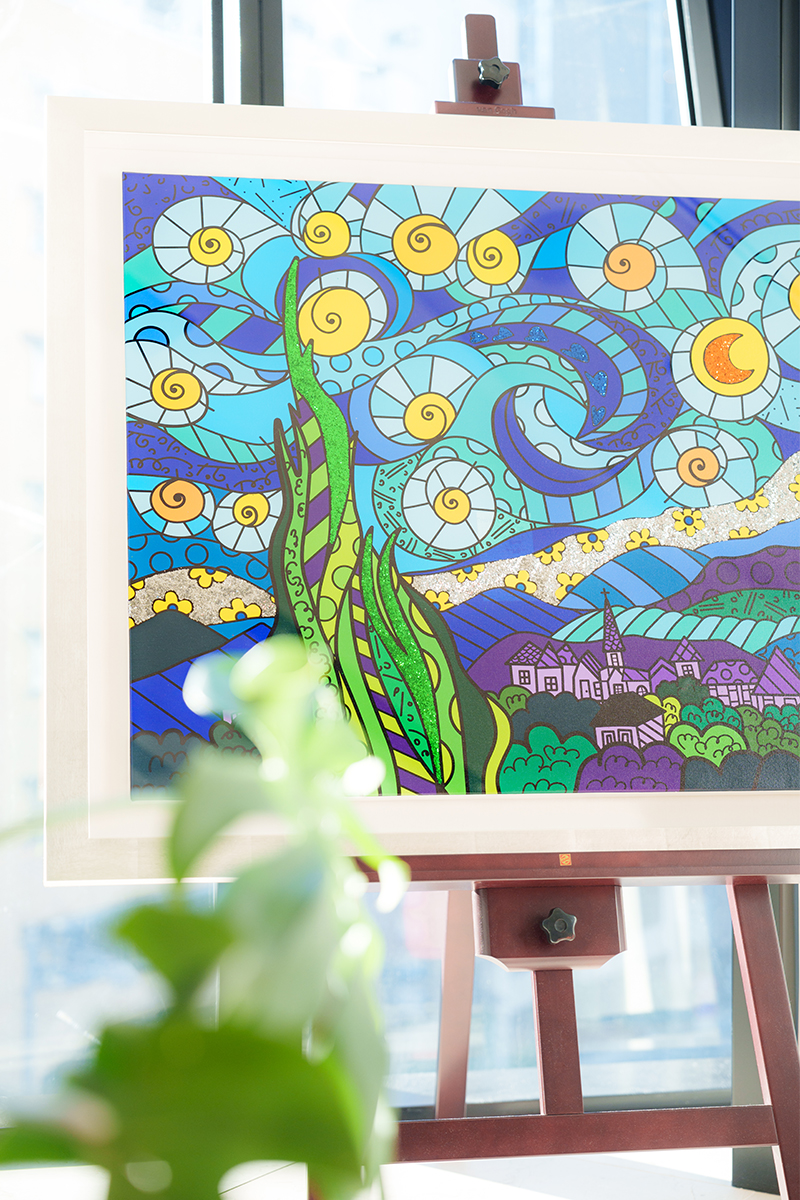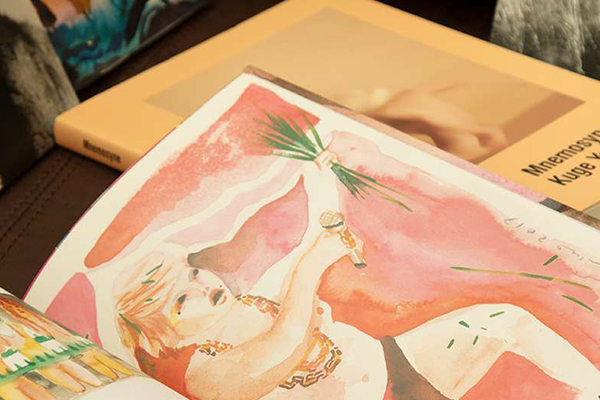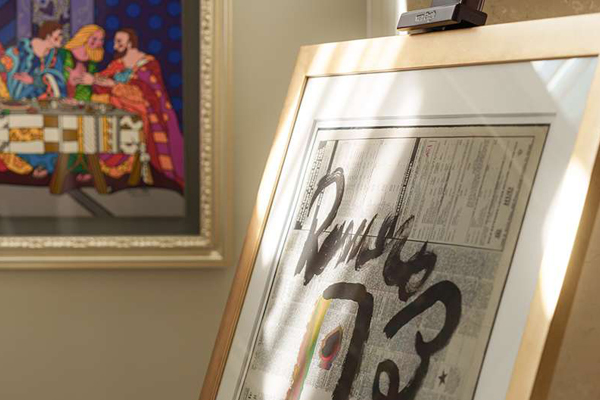美味なるアートを追い求めて。
Feature | 2024.02.22
美味しい料理をつくるのに欠かせないのが想像力。
豊かなイマジネーションはひと皿のアートを創りだす。
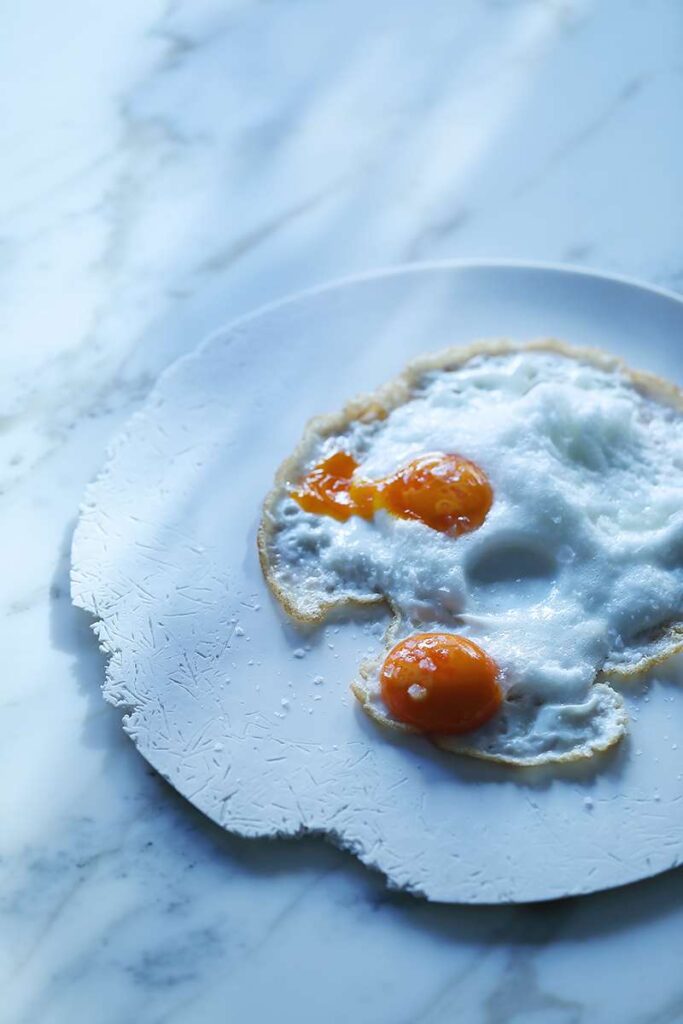
藤田の写真にインスパイアされてつくられた松井の“目玉焼き”を藤田が撮った(下記の“牛の昆布締め”も)。イマジネーションが連鎖した写真。
あるものを想い、それを表現する。アートの制作過程はそのまま、料理づくりの過程になる。では、こんな試みはどうだろう。料理家が一冊の写真集を手に取り、そのなかの作品にインスパイアされたとき、そこからどんな料理が生まれるのか。写真から写真でも、写真から絵でもなく、写真から料理をつくる。そんな突拍子もない提案を楽しそうに受けてくれたのが料理家でありアートディレクターでもある松井まり子。
彼女が選んだのは写真家 藤田はるかの作品。そこにあるのは、装飾的なものを極限まで削ぎ落としながら、耳を澄ませばさまざまな自然の音が聴こえてきそうな、静寂と豊穣さを感じさせる世界。それに松井は、無駄な味を省くことで生まれる豊かな味わいで応えようとした。
藤田の写真にインスパイアされて生まれた料理は、シンプルに、“目玉焼き”。ただ、そのレシピが普通とは違う。まず、卵白と卵黄を分け、卵白に空気を含ませながら混ぜる。そうしてメレンゲ状になったものを熱したフライパンへ流し、その上に卵黄を落とす。「卵料理は料理の原点。フレンチでも、卵に始まり卵に終わる、といわれています。藤田さんの写真からは、原点や原初というイメージが湧き、そこから奇をてらわない美しさを表現したいと想い、このように目玉焼きを再構築してみました」と松井は語る。さらに色合いや器にもこだわり、それらを含めてひとつの作品となっている。
味は、驚くほど豊か。さくっとした食感の後、口のなかでとろっととろける。そこに塩で引き立てられた卵黄の旨味が乗り、複層的な味覚が広がる。シンプル、なのに深みがある。なるほど、藤田の写真のような味がした。
Imagine and create. The artistry in cooking parallels that of creating art. Consider this experiment: a chef, inspired by a photograph in a book, crafts a dish mirroring that inspiration. Not a photo from a photo, nor a painting from a photo, but a culinary dish from an image. Chef and art director Mariko Matsui embraced this unusual challenge with gusto.
She chose the works of photographer Haruka Fujita. These works, which eschew decorative elements to the extreme, evoke various sounds of nature if one listens carefully, conveying a world of tranquility and abundance. Matsui sought to replicate this essence by pursuing rich taste through the elimination of superfluous flavors.
Inspired by Fujita’s photography, Matsui crafted a unique “fried egg.” She began by separating the egg white and yolk, whipping the white until fluffy. Then, she poured the meringue-like white into a hot pan, gently adding the yolk on top. “Egg dishes are foundational in cooking. The French say that everything starts and ends with an egg. Inspired by Fujita’s themes of origin and simplicity, I reimagined the fried egg to capture this unadorned beauty,” Matsui explains. Her attention to color and dishware elevates the dish into a complete artistic expression.
The flavor is unexpectedly rich, starting with a crisp texture followed by a smooth melt in the mouth. A hint of salt enhances the egg yolk’s umami, adding a complex layer of flavor. It’s simple yet profound, reminiscent of the essence in Fujita’s photographs.
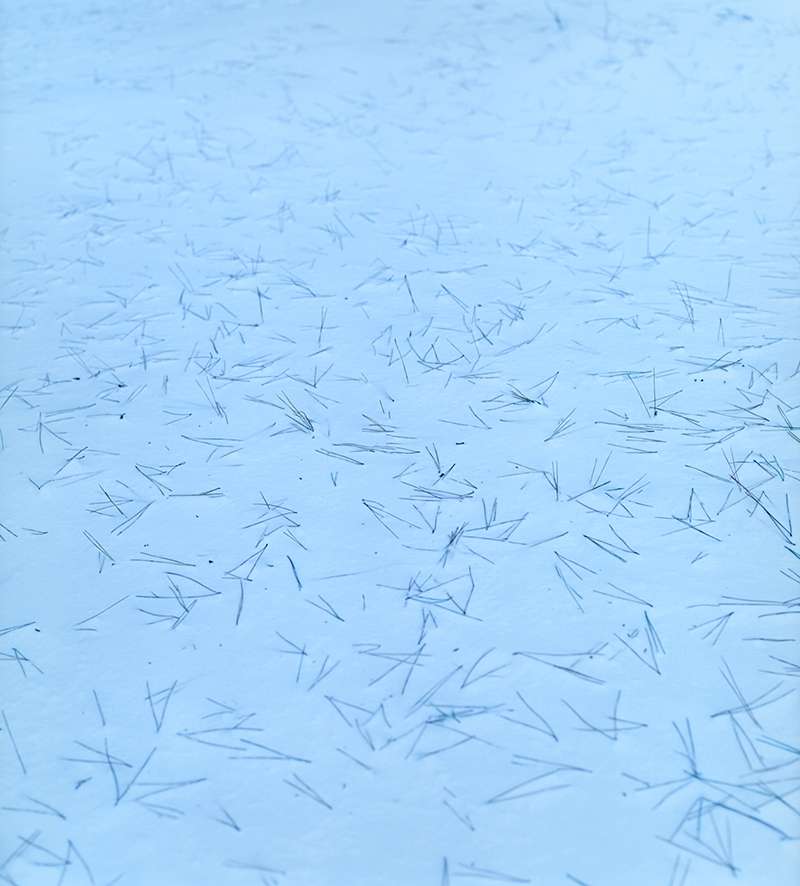
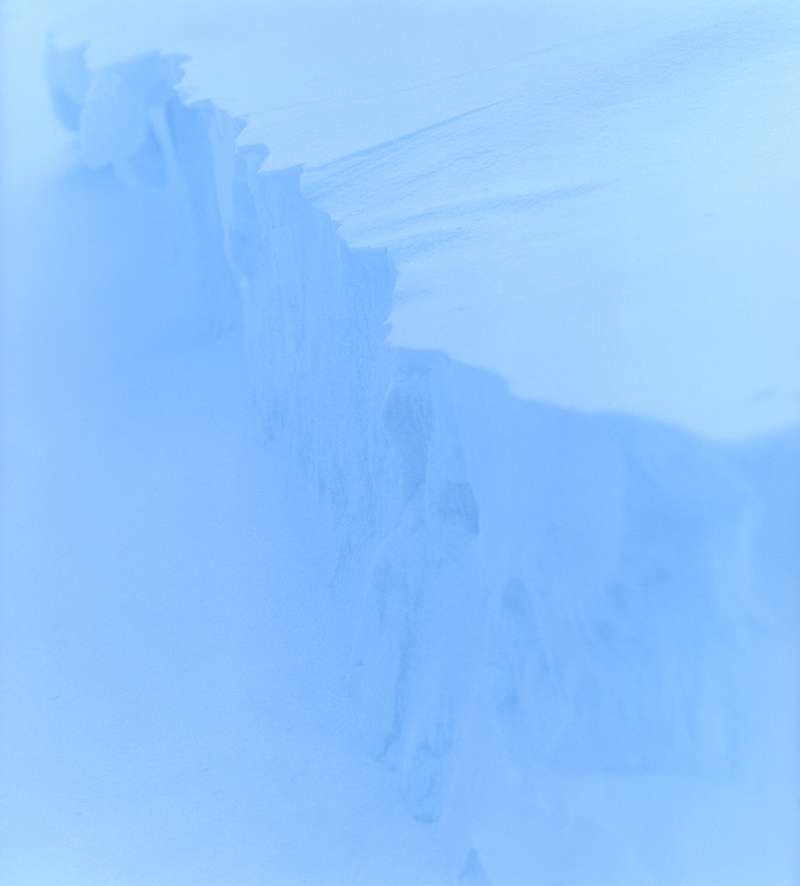
藤田はるか Haruka Fujita 『winter』より
枯山水にある滋味深い味わいを表現した牛の昆布締め。


松井が2つめに選んだのは、印画紙に写り込んだような花の写真。そしてつくられたのが “牛の昆布締め”。これは松井のシグネチャー的な料理だという。「徳島県の薬王国分寺の境内にある阿波国分寺庭園に行ったとき、その枯山水に圧倒されました。阿波の青石が豪快に組まれた庭園は、無骨なのに繊細で儚く、美しかった。そのイメージを料理に表現したのが“牛の昆布締め”です。この料理にあるのは、マイナスの美学。無駄を省いた先にある美味しさです。牛肉を昆布で締めて焼いただけですが、肉のイノシン酸と昆布のグルタミン酸が掛け合わされ、美味しさが2倍にも3倍にもなる。無骨なのに旨く、栄養もある。藤田さんの花の写真にも儚さとともに豊かな滋味のようなものを感じ、そこからこの“牛の昆布締め” が似合うかなと思いつくりました」。そう語る松井にとって、料理とアートは同義語となっている。
Matsui’s second inspiration came from photographs of flowers that looked as if transferred to printing paper. This inspired beef kombu-jime, one of her signature dishes. “Visiting the Awa Kokubunji Garden at Yakuo Kokubunji Temple in Tokushima, I was awestruck by the rock garden. Its bold Awa blue stones crafted a landscape that was rugged, yet delicate and transiently beautiful. My beef kombu-jime is a culinary interpretation of this garden. The dish is a study in minimalist aesthetics, finding beauty in simplicity. By curing beef in kelp and grilling it, the meat’s inosinic acid and the kelp’s glutamic acid merge, enriching the flavor two or threefold. It’s a dish that’s robust yet delicate, rich in both taste and nutrition. Fujita’s floral photography, with its ephemeral richness, was the perfect trigger for creating beef kombu-jime. “ For Matsui, the parallels between cooking and art are clear.
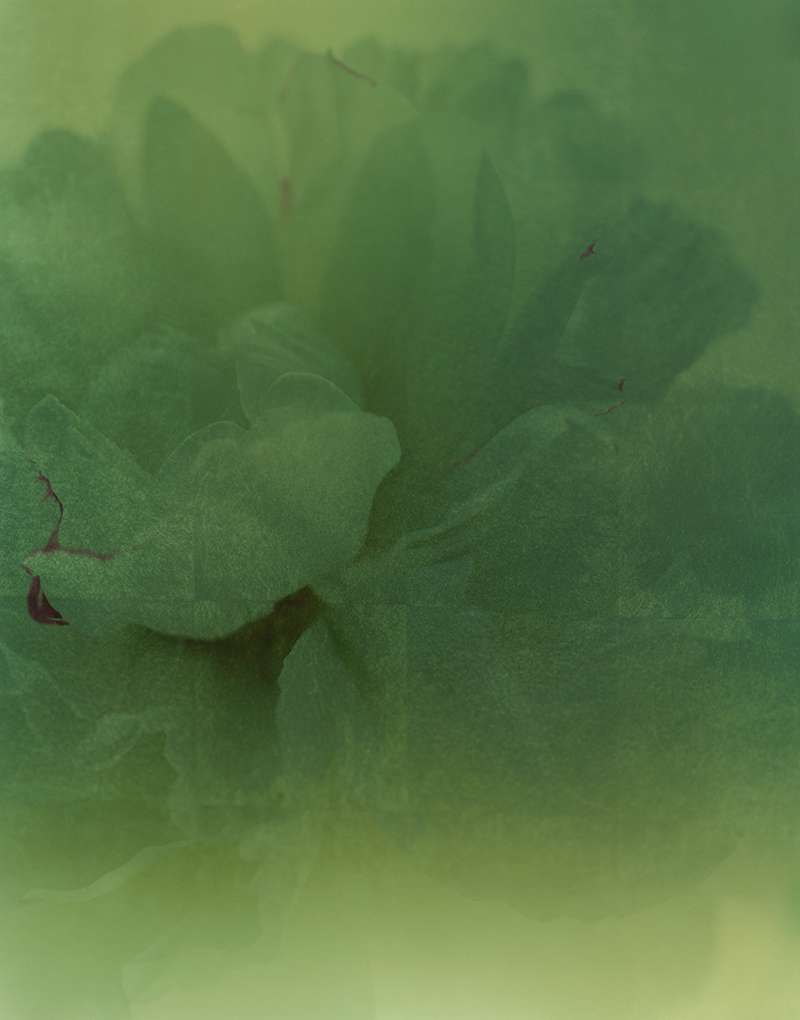
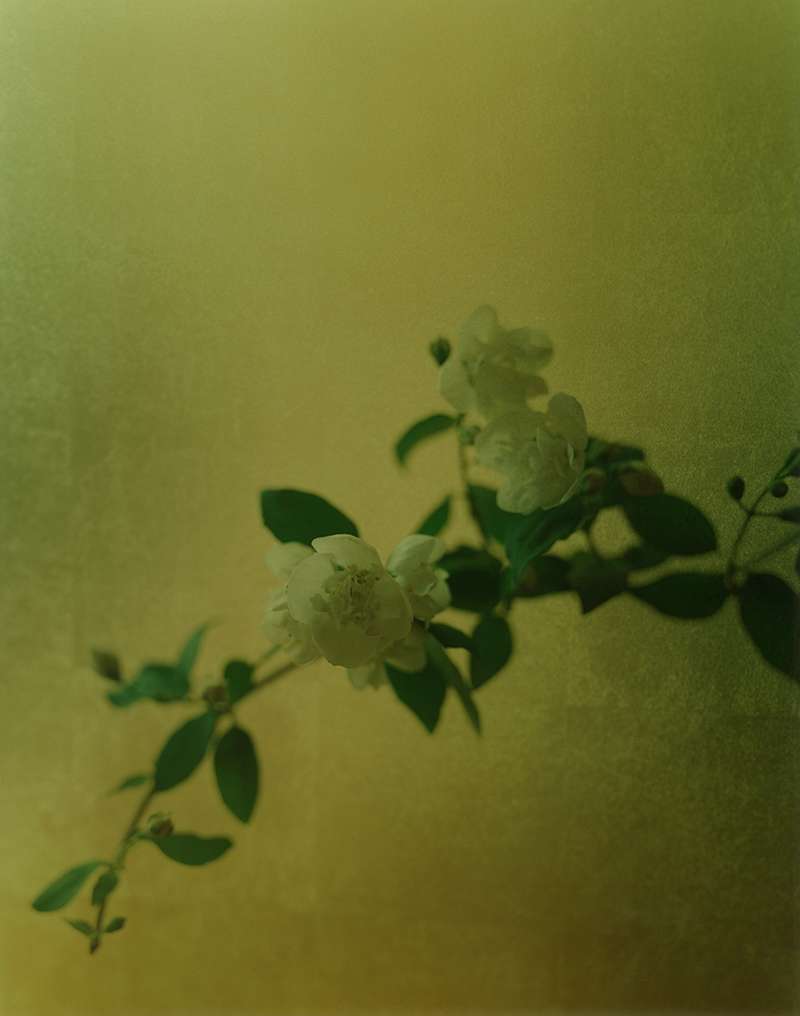
藤田はるか Haruka Fujita 『torikumo』より
藤田 はるか
Haruka Fujita
<写真家>
宮城県仙台市生まれ。1998年、渡英。現在、東京を拠点に活動中。
主な展示に、個展(1998年/仙台私立現代美術館)、「いくつもの音のない川」(2013年/AL・東京)(2020年/WATERMARK arts&crafts・東京)、
東日本大震災のチャリティー・グループ展「sowing seeds」(2013年/ノルウェー、オスロ)、「winter」(2015年/YKG・東京)(2020年/BOOK AND SONS・東京)、「torikumo」(2023年/BOOK AND SONS・東京)(2023年/LIBRIS KOBACO・福岡)など。
写真集に『いくつもの音のない川』(2013年/私家版)、『winter』(2015年/HeHe)、『111l』(2020年/私家版)、『torikumo』(2022年/HeHe)。
・Instagram : fujitaharukaphoto
・web : https://www.fujitaharukaphoto.com/
松井 まり子
Mariko Matsui
<料理家>
株式会社De-De
Senior Art Director/Graphic Designer/Foods Stylist
1994年渡米、大学でグラフィックデザインを学びBachelor of Fine Art(美術学士)を取得。ニューヨークでローカルタブロイド誌の広告制作を経て2002年に帰国。広告制作会社を経て2015年独立。アートディレクター、フードスタイリストとして活動する傍ら2024年にはDe-De GYOZAもスタート。
・Instagram : marikomog
・web : http://de-de.co
Photogallery
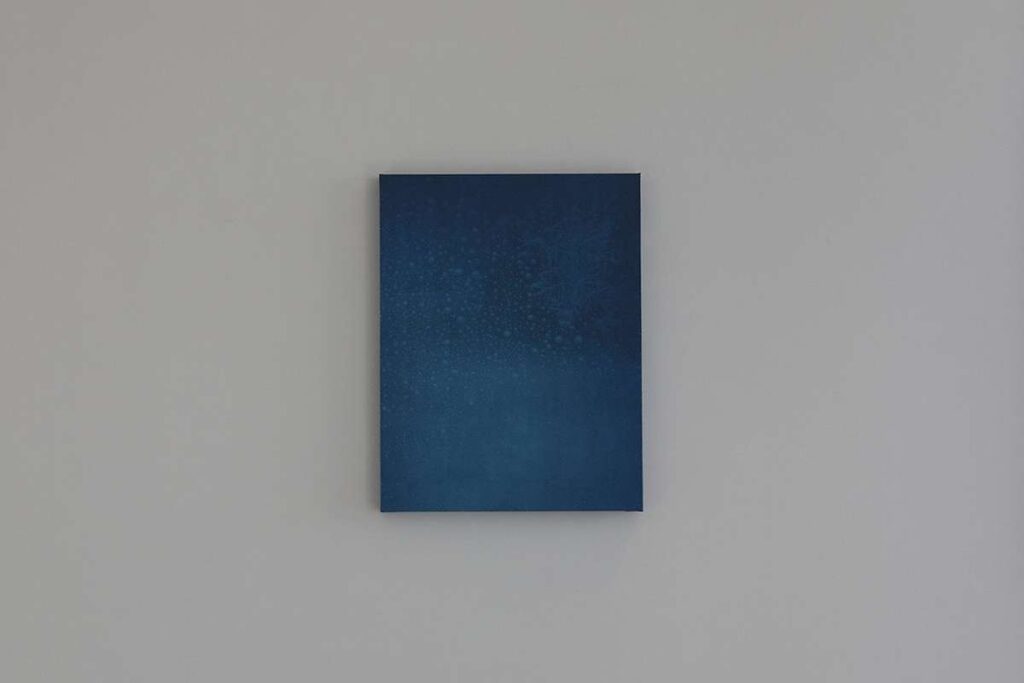
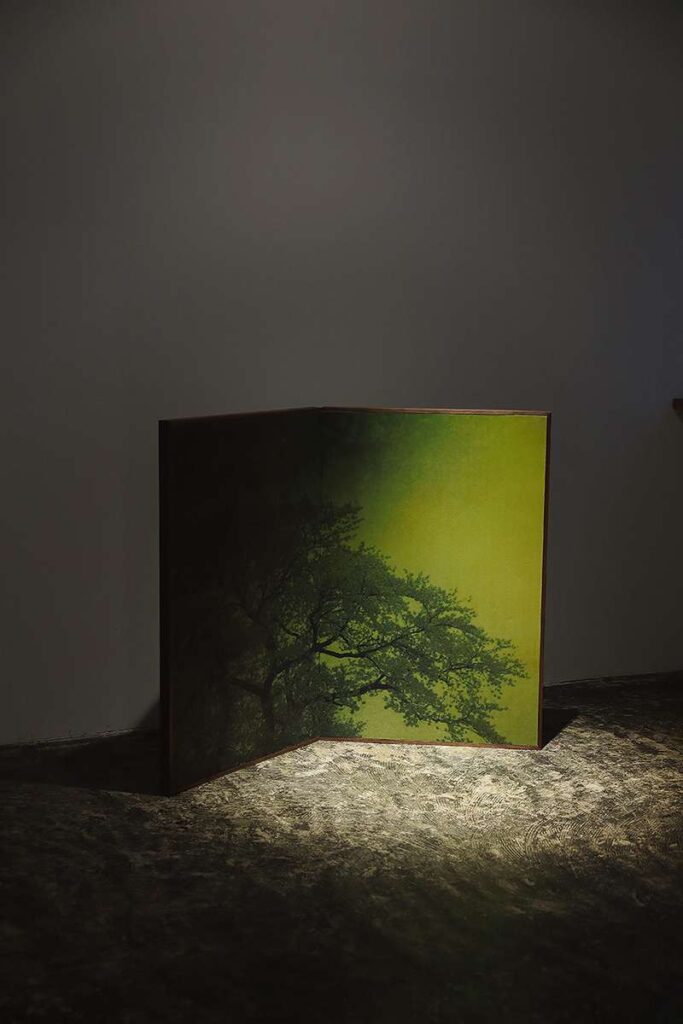

閲覧中の特集はこちら
